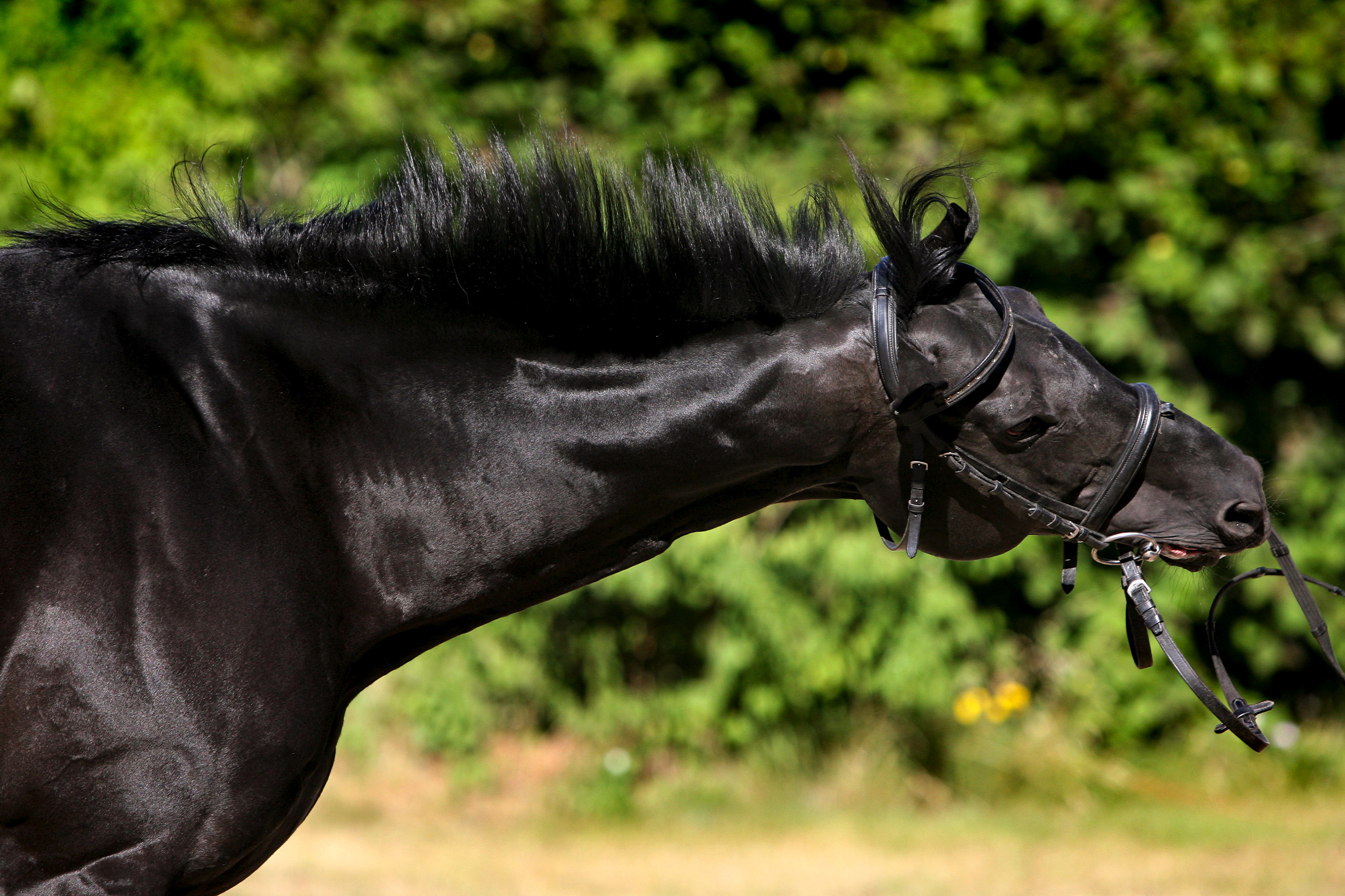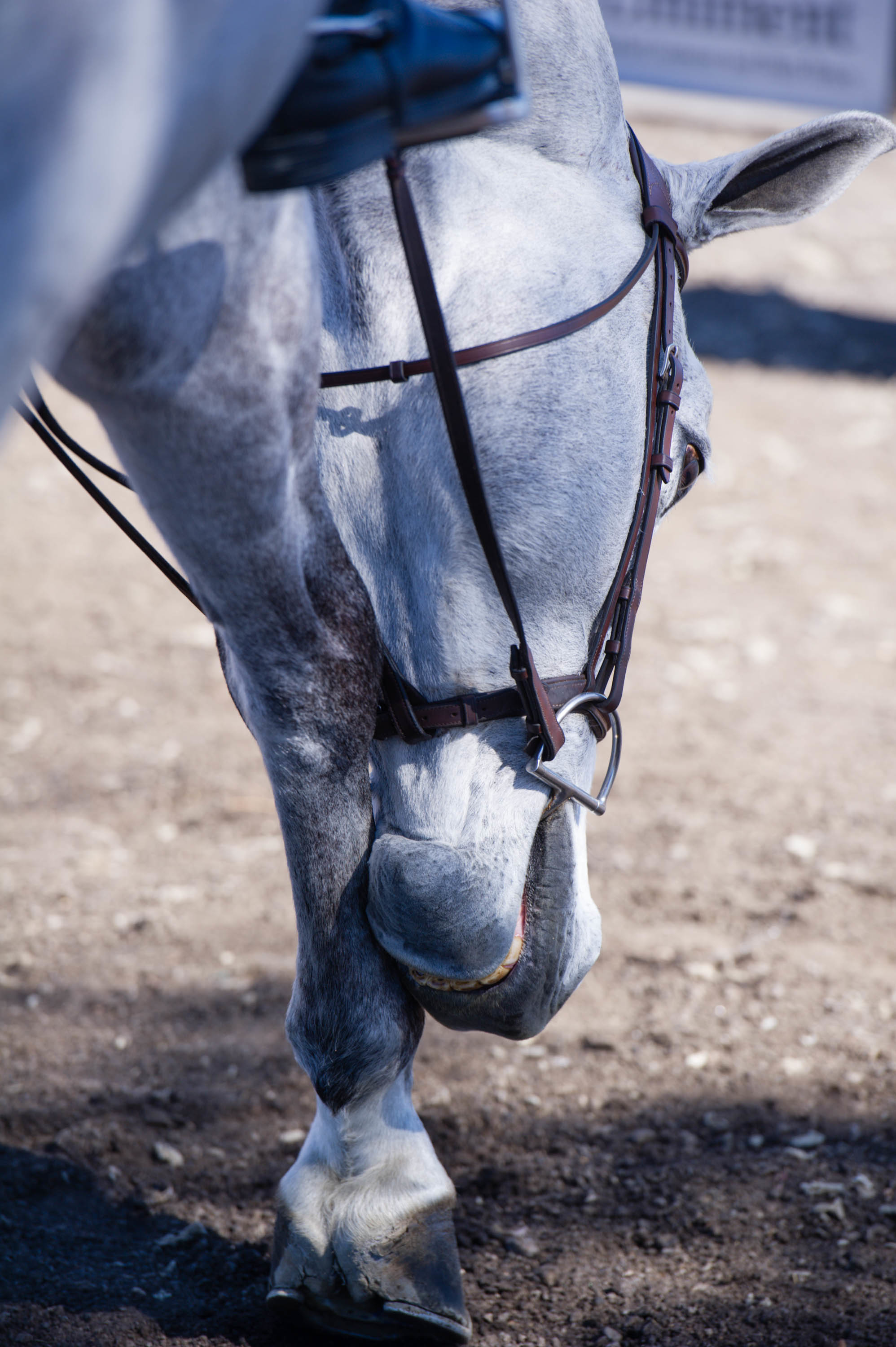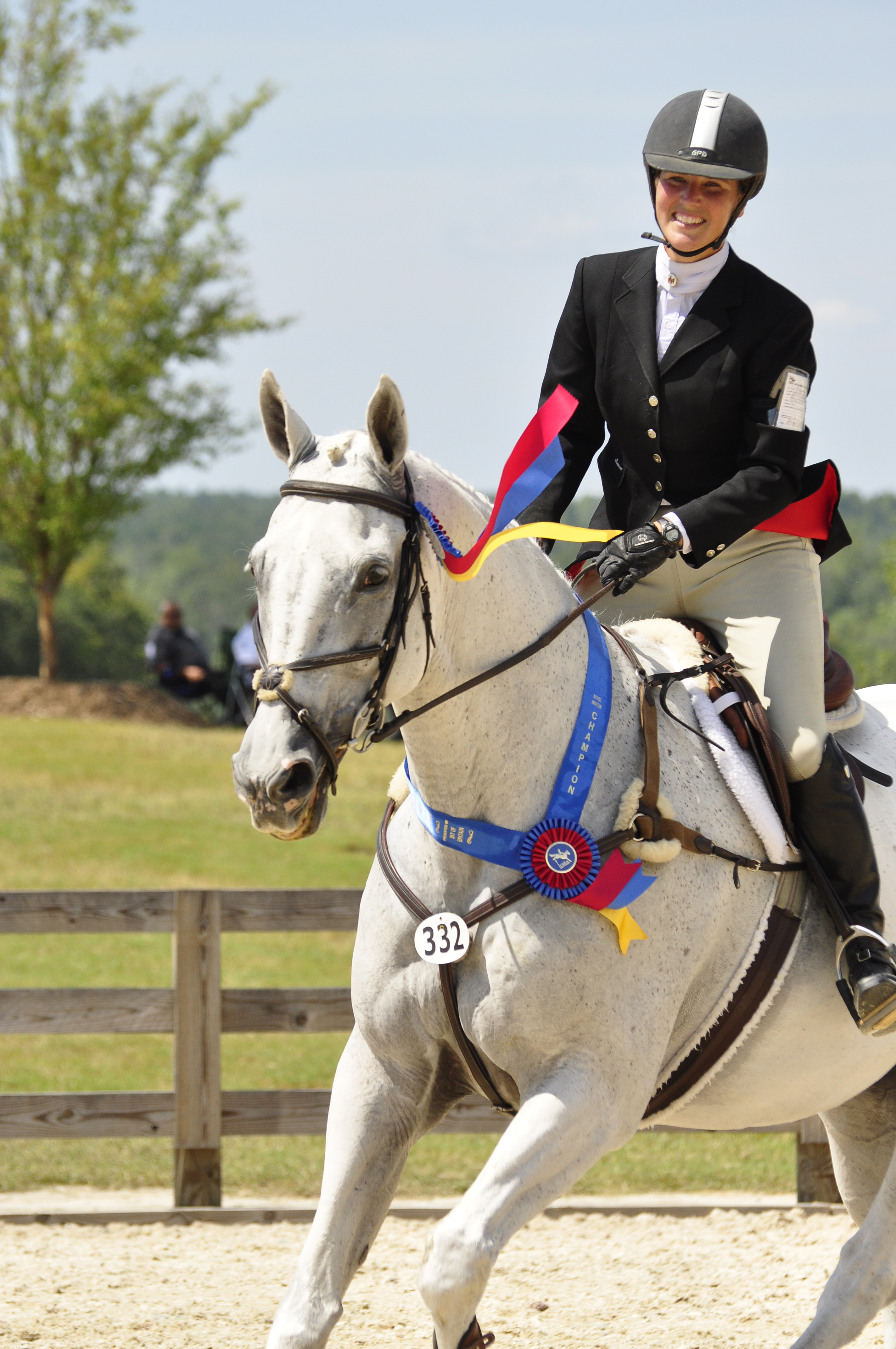
Horses frequently toss and shake their heads for many reasons. They may be shooing away irritating insects or anticipating a meal. Some may do it in response to a physical problem such as ear infections or arthritis. However, repeated and seemingly involuntary headshaking may be indicative of a nerve disorder called trigeminal-mediated headshaking. This distressing condition can affect a horse’s performance, impair routine daily functions and is a potential safety hazard for horses and their handlers. There is no guaranteed cure and because each case is different, figuring out an effective management routine is a puzzle. But there is hope for a solution as new research closes in on identifying the specific underlying cause of headshaking.
When working properly, the trigeminal nerve, the largest cranial nerve, transmits sensation to the face and provides motor function to the muscles used for chewing. A horse affected by trigeminal-mediated headshaking may suddenly and repeatedly flick, jerk or shake his head. Moving it vertically up and down is common, but he may also shake his head around or side to side. Other signs include:
- obsessively rubbing his nose on objects or forelimbs
- striking at his muzzle
- twitching lips
- snorting
- an anxious facial expression.
This behavior is in response to neuropathic facial pain caused by an abnormal or compromised trigeminal nerve. There is a functional disturbance of the nerve that changes how it processes sensory input and lowers its threshold for firing. “Branches of the trigeminal nerve are hyperactive to sensation and stimuli, which leads to clinical signs that may be interpreted as facial pain and discomfort,” says Katie Delph, DVM, MS, ACVIM, an assistant professor of equine internal medicine at the Kansas State University College of Veterinary Medicine. The horse may feel pain in the form of burning, itching, tingling or electrical sensations in his face. The cause of the nerve abnormality is unknown.
When and why headshaking occurs varies widely. It can be seasonal, cropping up primarily in the spring and summer, or it can take place year-round. It may happen only when the horse is ridden or all of the time, continuous or intermittent. Triggers include:
- light
- exercise
- sound
- temperature
- wind
- neck position
- wearing tack.
Photic and idiopathic are types of trigeminal-mediated headshaking. Photic headshakers have a distinct hypersensitivity to light and their symptoms decrease at night. Spontaneous (idiopathic) headshaking occurs with no external stimuli.
Mature geldings are more prone to headshaking than mares or stallions. Although the condition can appear at any age, it usually first occurs when a horse is between the ages of 8 and 10. There is no indication that headshaking is a genetic disorder or more likely to occur in certain breeds.

Confirming a Diagnosis
When diagnosing the reason for excessive headshaking, you first need to distinguish whether a horse’s behavior is in response to another physical problem (symptomatic) or trigeminal-mediated.
According to Dr. Delph, symptomatic cases of headshaking have been reported to be associated with allergies, inner and middle ear infections, fungal infections of the sinuses and guttural pouches, ear mites, ticks, dental and eye problems, arthritis, bony fractures of an area of the skull associated with the ears (temporohyoid osteoarthropathy) and skull injuries.
“It is important for owners of affected horses to work with their veterinarians in order to rule out one of these physical problems,” Dr. Delph says. “If any of these problems are the cause of headshaking and they are treated successfully, headshaking should resolve.”
If a physical exam reveals a healthy horse and headshaking persists, trigeminal-mediated headshaking is diagnosed. The next step for the owner and veterinarian is to determine the horse’s trigger through “extensive observation of the horse with videos and tracking the horse’s clinical signs in relation to weather, sunlight exposure, exercise and other factors,” Dr. Delph says.
If triggers are determined, the first step is to try to reduce, minimize or eliminate them as much as possible from the horse’s daily life. For example, a horse triggered by sunlight or wind can be kept indoors during the day in a dark stall or ridden in an indoor arena at night or only in calm weather conditions. Some photic headshakers benefit from wearing a face mask, such as a Guardian mask, designed to shade the eyes from ultraviolet rays and aid in the treatment and prevention of eye conditions and injuries. Some horses respond well to being exercised with a nose net, a mesh or cloth covering that attaches to the bridle (see sidebar above for more about competing with a nose net) or an apparatus that dangles over the nose and muzzle.
“For some horses, the nose net is producing a sensory input into the trigeminal system and temporarily making the nerve not fire,” says John Madigan, BS, DVM, MS, DACVIM, a professor of medicine and epidemiology at the University of California, Davis and a leading expert on headshaking. Similar to when a horse holds his nose against a wall or forelimb, “they are trying to reduce the sensation that is going on. When they push on their face with pressure, it’s just like trying to stop a sneeze.”

Finding Relief
Certain medications, supplements and therapies are designed to relieve headshaking symptoms. However, because every case is different, treatments are not going to work the same for every horse, and rarely is headshaking completely cured.
Ask your veterinarian about prescription medications to control neuropathic pain in trigeminal-mediated headshakers. Cyproheptadine (an antihistamine) and carbamazepine (an anticonvulsant) are commonly prescribed, but side effects include lethargy and depression.
If your horse is a seasonal headshaker whose symptoms are typically worse in spring and summer, your veterinarian might suggest giving melatonin year-round. This tricks the body into thinking it is always winter by mimicking the naturally occurring rise of melatonin at the onset of early darkness in the winter.
There are ongoing studies examining the effects of nutrition, such as adding magnesium to the diet and determining whether calcium and alkalinity are relevant to trigeminal nerve function. Dr. Madigan says to consider whether there have been any recent changes in a horse’s diet or climate and if the headshaking began around that time. He recommends adding magnesium to the diet. It is not a cure, but it may help stabilize the trigeminal nerve. Before supplementing with magnesium, however, consult a veterinarian about dosage and have him monitor magnesium levels in the blood to prevent an overdose. (Dr. Madigan says you also want to ensure that your horse maintains a healthy weight because being underworked and overfed is a risk factor for headshaking.)
Some horses show improvement with a supplement called Top Stock. Made of deep-sea kelp and blended vitamins, Top Stock is marketed to target overactive nerve tissue. Dr. Madigan performed a clinical trial of Top Stock. During the study, there were no control variables; owners evaluated their horses before and after using the supplement and reported back to Dr. Madigan. With a 70 percent success rate in the trial, the product’s success likely relates back to dietary influence, says Dr. Madigan.
A relatively new treatment known as PENS therapy (percutaneous electrical nerve stimulation) uses a needle-sized probe to stimulate the trigeminal nerve and thereby reduce hypersensitivity and relieve pain. The procedure is typically well tolerated and helps some horses manage neuropathic pain. However, many horses require multiple treatments for any relief to occur and be maintained, it is expensive and it is not a permanent solution.
Depending on severity and the horse’s trigger, a headshaker can still be ridden and longed. However, performance may be affected if a horse flicks his head or stops suddenly to rub his nose during exercise. A horse who flips his head violently enough to possibly injure a rider should not be ridden. Exercise some patience when riding a headshaker. He cannot help himself so do not punish him for displaying symptoms.
Sometimes headshaking dramatically and negatively affects a horse’s quality of life. An idiopathic headshaker displaying symptoms at rest can have difficulty eating. Neuropathic pain can even be severe enough to cause self-injury. In such a case and if a horse won’t respond to treatment or has become dangerous to handle, euthanasia is a humane option.

Research Gives Hope
Veterinarians are working to unravel the mysteries of headshaking. While an abnormal trigeminal nerve is known to be the cause of neuropathic pain, current research is studying why the abnormalities occur and how they can be treated.
“A lot of time is spent thinking about triggers,” Dr. Madigan says. “Those are important, but we’re trying to figure out why a trigger such as light, sound or exercise ends up producing neuropathic pain. Rather than modify or control triggers, we’re trying to figure out why the nerve is misbehaving and what we can do to control or reverse that.”
The trigeminal nerve’s threshold for firing is regulated by the gated movement of certain ions (channels). Dr. Madigan suspects the problems with the nerve are caused by an abnormality in this movement. “The hope and dream of our research is that we find the abnormality in the channel [that affects the trigeminal nerve] so we can correct it,” he says.
There also is a study that has looked into the effects of reproductive hormones on the trigeminal nerve and suggests hormone dysregulation could be why castrated males are more susceptible to headshaking. This paper is currently under peer review.
Because trigeminal-mediated headshaking is considered a functional disturbance and because some horses spontaneously recover, it is not likely the nerve is permanently damaged. In fact, the neurons look normal under a microscope. “That gives us hope,” Dr. Madigan says, “that if we can understand what triggers it, we can repair it.”

Nose Nets in Competition
Not all competitions allow horses to compete with a nose net. If your headshaker benefits from being ridden with a nose net, get prior permission from the officials to use one in the competition arena. Alternatively, you may be able to utilize the nose net during warm up and then remove it before competing.
US Equestrian, the national governing body for equestrian sport, allows the use of nose nets in some disciplines. According to the 2018 USEF Rulebook, nose nets are permitted only under certain conditions for dressage and the dressage phase of eventing (see below). Refer to your discipline’s specific rulebook regarding nose nets or speak to your event official before using.
Rules for Eventing, EV115.2.g
1. The entry must be accompanied by a letter, signed by the horse’s veterinarian on letterhead, stating that the horse has been diagnosed with headshaking syndrome and that the horse’s condition is improved with the use of a nose net.
2. The nose net must be made of a transparent material and cover only the top half of the muzzle, not the bit or the horse’s mouth.
Rules for Dressage, DR121
9. A nose net may be used in warmup and in competition provided the entry is accompanied by a signed letter from the horse’s veterinarian. A copy of this letter must be attached to each test or class sheet. The letter must:
a. Be written on the veterinarian’s stationery and clearly state that the horse has been diagnosed with headshaking syndrome and the syndrome is improved with the use of a nose net.
b. State the brand of nose net to be used. A list of USEF-approved dressage nose-net brands may be found on the website (www.usef.org).
Riders competing in International Equestrian Federation (FEI) competitions should consult their discipline’s rulebook or speak to event officials before using a nose net on their horse at a show.

Success Through Compromise
Liz Holtz Messaglia, an adult amateur eventer from Indiana, bought her Trakehner gelding, Apollo Star, at age 12, and he began headshaking the following spring. Apollo’s case is severe and Liz has spent years learning to manage his symptoms.
At first, Liz thought the headshaking was a behavior problem. Apollo would violently throw his head while being led and drag her around. At one point, his symptoms were so serious she considered euthanasia.
“His face and legs were bloody and he would stand in the corner and wouldn’t walk. He would throw his head on the ground, and I had to keep his front legs wrapped with bandages because he would rub his legs raw. He started to colic from the pain,” Liz says. Thankfully, with the help of aggressive pharmaceutical and nutraceutical treatment Apollo’s condition gradually improved and Liz no longer considered euthanasia as a last option.
Apollo still headshakes today, but Liz, who keeps her horses at home, recognizes and manages his symptoms. When he twitches his nose from side to side or rests his nose on the paddock fence, Liz brings him in and puts him in a dark stall, reducing the light sensitivity and stopping the symptoms from getting worse.
She has tried numerous treatments including cyproheptadine, magnesium, allergy shots, acupuncture, miofascial-release therapy, massage, Chinese herbs, Equiwinner patches (an electrolyte-balancing product), melatonin, switching bits and bridles and more, but has yet to find a constantly effective remedy. She rides Apollo, now 19, with a Guardian mask or nose net. She usually rides in an indoor arena and does stretchy work to keep him relaxed. All this helps but does not eliminate Apollo’s headshaking.
“There are some days that it’s just not his day, so we stop. I have eaten a lot of [competition] entries with him because you have to do right by the horse,” Liz says. “You can’t be tied to a score when you own a headshaker. You have to be happy you’re there and enjoy the day.”
Nevertheless, they have successfully competed in eventing, show jumping and dressage in the eight years Liz has owned him. In 2011, they even won the Novice Amateur Championship at the U.S. Eventing Association American Eventing Championships and more recently competed at the U.S. Dressage Federation Region 2 Championships.
This article was originally published in the March 2018 issue of Practical Horseman.









